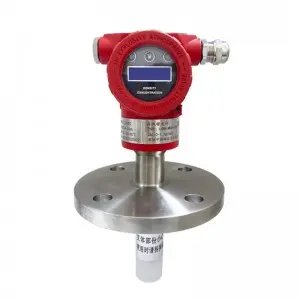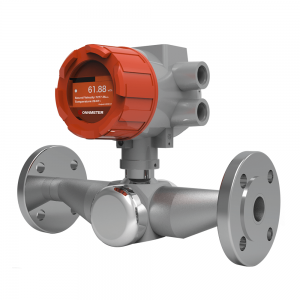Each production link matters in core competitiveness of a company against the intensive competition in the biopharmaceutical industry. Take the production of temsirolimus concentrated solution for injection as a example. Even a minor change concentration influences the whole production significantly.

Propylene glycol is a critical solvent in temsirolimus concentrated solution for injection, and its concentration directly affects the drug’s solubility and stability. An appropriate propylene glycol concentration ensures complete dissolution of temsirolimus, preventing drug crystallization or precipitation, maintaining uniform stability during storage and use, and avoiding reduced efficacy or failure due to improper concentration.
Dosage of propylene glyco varies in specific applications. In the pharmaceutical sector, concentration requirements are particularly stringent. According to the United States Pharmacopeia (USP), its concentration in injectable solutions must not exceed 30% (v/v), and the maximum single-dose intake for oral preparations should be below 25 mg/kg of body weight.
Three Challenges of Traditional Concentration Control
Time- and Labor-Intensive Inefficient Manual Testing
Propylene glycol concentration testing relies on manual sampling and laboratory analysis in traditional production. It often takes several hours to obtain results while having no explicit readings in waiting.
Concentration deviations may lead to batch failures, production halts, and idle equipment, significantly extending production cycles and increasing time costs. Statistics indicate that only delays in concentration testing can result in significant lost in effective production time annually.
Uncontrolled Concentration Fluctuations
Temsirolimus concentrated solution for injection demands precise propylene glycol concentration, as even minor fluctuations can impact drug stability and safety. The limited frequency of manual testing makes it impossible to capture real-time concentration changes, hindering timely adjustments.
Deviations from standard concentrations may cause quality issues such as turbidity or precipitation, potentially leading to severe clinical adverse reactions, damaging corporate reputation, and even triggering recall risks or legal disputes.
Hidden Resource Waste
Frequent manual testing requires lots of manpower, materials, and time. Moreover, imprecise concentration control leads to raw material waste, product rework, and equipment wear, creating substantial hidden costs. For example, a medium-sized pharmaceutical company may incur millions of loss due to improper propylene glycol concentration control, stemming from raw material waste and rework.
The Necessity of Concentration Control
As a critical excipient in temsirolimus concentrated solution for injection, the quality and performance of final drugs depend on the concentration of propylene glycol. The appropriate propylene glycol concentration ensures drug solubility and stability while minimizing irritation to ensure patient safety.
Solution for Cost Reduction and Efficiency Improvement
Facing the challenges of traditional concentration control, Lonnmeter’s inline concentration meter, with its superior performance, has become a “secret weapon” for pharmaceutical companies to achieve precise production, reduce costs, and enhance efficiency.
Real-Time Monitoring, Precise Control
Lonnmeter’s inline concentration meter employs advanced tuning fork vibration features and intelligent algorithms to monitor propylene glycol concentration in real-time and continuously, delivering data to the production control system within seconds. Operators can instantly detect concentration fluctuations and make precise adjustments to maintain stability within standard ranges. Its accuracy of 0.003 g/ml far exceeds industry average levels.
Automated Control, Enhanced Efficiency
The meter features robust equipment integration, seamlessly connecting with various production systems. When deviations from set values are detected, it automatically triggers actions such as liquid addition or stirring without manual intervention, enabling fully automated process control. This significantly reduces human error and time costs while boosting production efficiency. In a case study of a well-known pharmaceutical company, introduction of Lonnmeter’s inline concentration meter reduced the production cycle for temsirolimus concentrated solution by an average of 30%, with a notable increase in capacity.
Quality Assurance, Reduced Risks
Through precise concentration control, Lonnmeter’s inline concentration meter effectively prevents drug quality issues caused by concentration fluctuations, significantly lowering batch failure rates and recall risks. Its built-in multidimensional quality monitoring system intelligently analyzes and predicts concentration trends, preemptively mitigating potential risks. Stable concentration control also enhances batch-to-batch consistency, strengthening product competitiveness in the market.
Long-Term Benefits, Cost Optimization
While the initial investment in Lonnmeter’s inline concentration meter is relatively high, its long-term cost optimization is substantial. By reducing raw material waste, lowering rework rates, and minimizing equipment wear, companies can effectively control production costs. Real-world data shows that using Lonnmeter’s meter can save over 20% annually on raw material and rework costs. Additionally, improved production efficiency and product quality translate into higher market returns, achieving true cost reduction and efficiency gains.
In the wave of high-quality development in the biopharmaceutical industry, precise concentration control has become a key factor in enhancing competitiveness. Lonnmeter’s inline concentration meter not only offers advanced technology and reliable performance but also provides customized solutions and comprehensive after-sales support. Whether adapting to complex production processes or offering 24/7 technical support, we are committed to safeguarding your production process. Contact us today to obtain your tailored concentration monitoring solution!
Post time: Jun-03-2025







